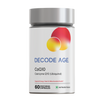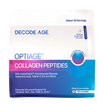Are you one of those who always relies on their “gut feeling”? Yes? Then you must be a clairvoyant?!
Let’s demystify the “Gut Feeling”.
For a moment let’s imagine a crowded neighbourhood- what’s it like on a normal weekday? People rushing to work, to their appointments, their chores - the routine grind basically, right?
Now, picture the same scenario - the hectic bustle - at a microscopic level, below the skin on our bodies inside us - a million microorganisms working constantly! That’s what we call the human microbiome, this is what we are made up of at a cellular level - comprising bacteria, archaea, viruses, and eukaryotes which reside within (and outside) our bodies.
These microorganisms/microbes, in trillions make the human microbiome, that can be separated into subsections dependent on their location. These wonderful life giving and life saving microbes or ‘bugs’ come from thousands of different species that impact human physiology, both in health and in disease.
From the human microbiome, gut microbiome, we mean the microorganisms (and their genes) that reside in the colon region of the body. The gut microbiome weighs about 200 grams, and operates as an independent organ in our body.
Microscopic organisms which are both beneficial (symbiotic bacteria) and dangerous (disease-causing) make up our microbiome. The majority of these are complementary in nature (meaning they benefit both our body and also the microbiota) while a small percentage of them are harmful.
Why do we fall sick?
The majority of these bacteria reside on the surface of our skin as well as within our digestive system, including the intestines. The gut microbiome refers to these bacteria that live inside our digestive tract.
Our gut is home to millions of these minute living organisms, with about 1000 distinct species, including various types of bacteria, viruses and fungal entities. Although many of these microorganisms reside within humans, bacteria make up the majority of the gut microbiome. 70% of these gut bacteria are found only in the colon. These bacteria really outnumber our own cells in our bodies. In our bodies, there are around 40 trillion bacterial cells, but we only have 30 trillion human cells.The problem occurs when this equilibrium is disrupted, which can be caused by infectious diseases, unbalanced diets, or long-term utilisation of antibiotics or even other bacteria-killing drugs. As a consequence, the body's susceptibility to diseases may increase.
Does this bacterial ecosystem actually help in slowing ageing?
Studies report that a healthy gut might be our key to healthy ageing. The microorganisms that occupy our gut through the emerging 20s take up a lesser fraction of the microbiome among healthy humans. These “bugs” also grow their population and diversify to different species as our body grows. Greater diversity in the gut microbiome is considered a sign of good health.
Individuals who are less healthy, the makeup of their microbiome stays primarily unchanged, and often die early. Individuals with higher distinct gut microbiota show better capability for activities as they get older and higher overall agility than those with less distinct gut microbiota.
For example, it can influence our immune function, because our cells tend to rely on a varied range of microbiological chemicals for correct growth and behaviour. This remarkably illustrates the impact of our microbiome's symbiotic nature. This comprises metabolites generated from our dietary sources by the bacteria, metabolites created through our gut microorganisms as well as compounds generated by us and biochemically regulated by gut bacteria.
How does the Gut Microbiome Influence Our Health?
Macro-life develops from micro-life forms and have co-existed for ages. As a result, all animals, including humans, have evolved to live with microorganisms. Microbes have adapted to exist within human bodies and play crucial functions throughout millions of years. In fact, humans cannot thrive without the gut microbiota. These germs begin to alter our bodies the minute we are born.
Microbes are thought to be transferred from mother to kid through birth canals. New research, however, suggests that humans are exposed to bacteria inside the womb. To live, these microorganisms create a commensal or symbiotic connection with human bodies, contributing to our biological functions.
Conclusion
Trillions of microorganisms that are essential to your health live in your intestines.
Modern diets strong in salty, sugary, or fatty processed meals, on the other hand, may harm the ageing gut, but higher fibre nutritional foods like fruits, vegetables, seeds, beans, and nuts, paired with exercise, may help sustain a healthy gut microbial balance as we age.
As a result, it can act as an indicator of numerous chronic diseases, which can eventually aid in the discovery of novel therapeutics to extend healthspan and curb ageing.




















Leave a comment
All comments are moderated before being published.
This site is protected by hCaptcha and the hCaptcha Privacy Policy and Terms of Service apply.